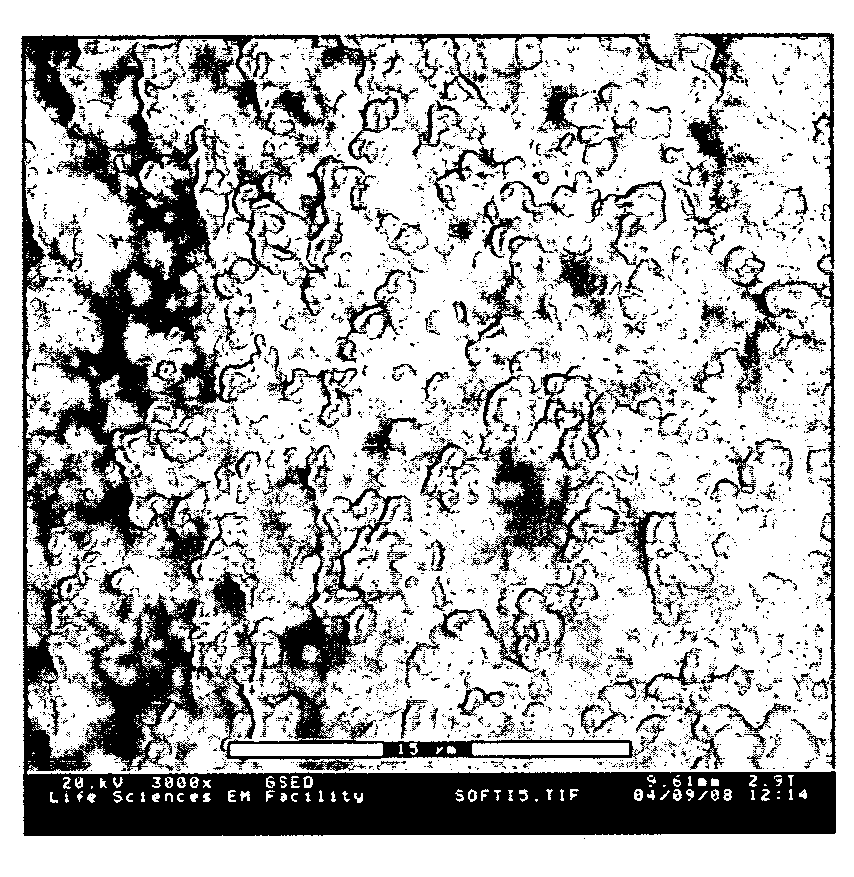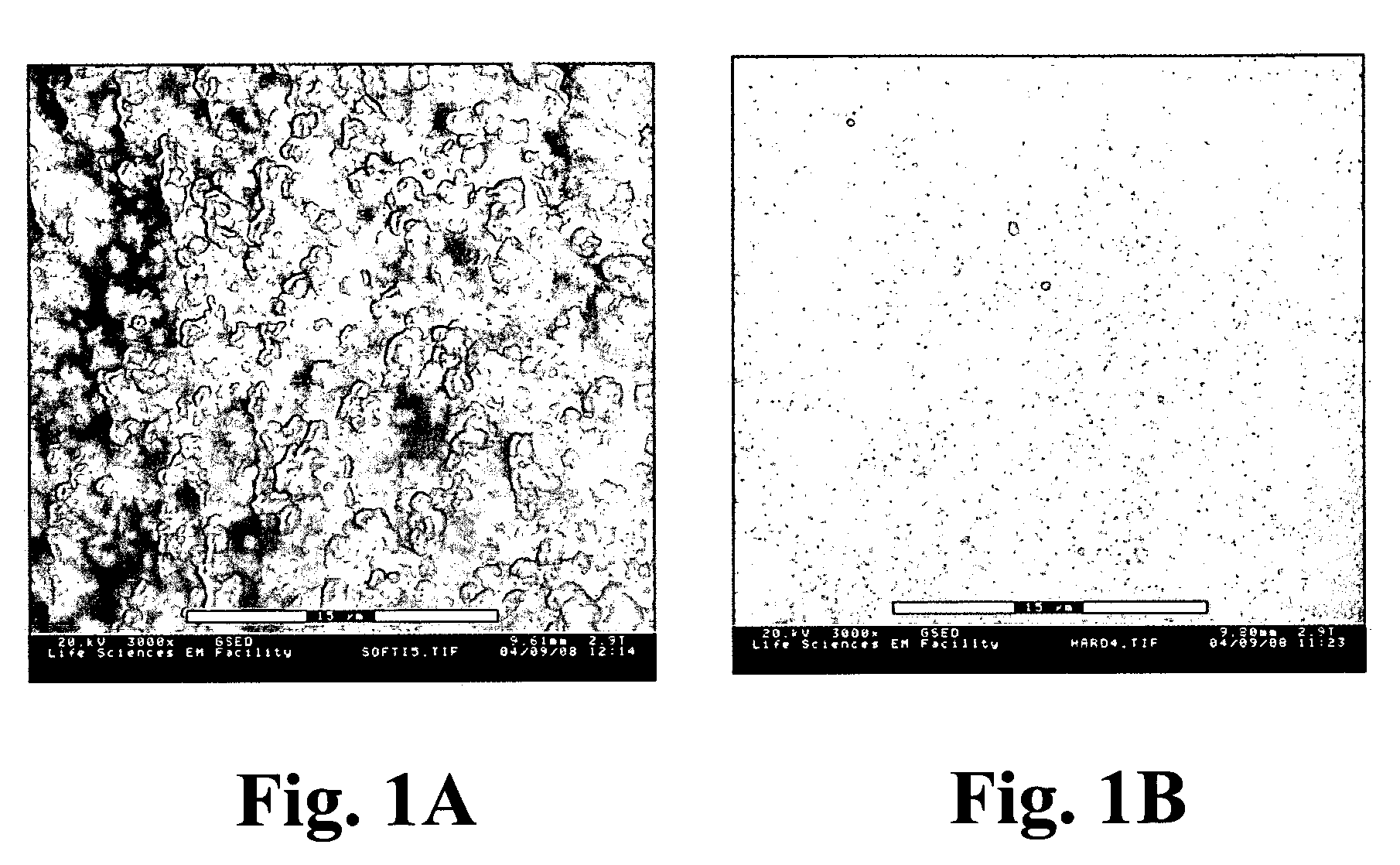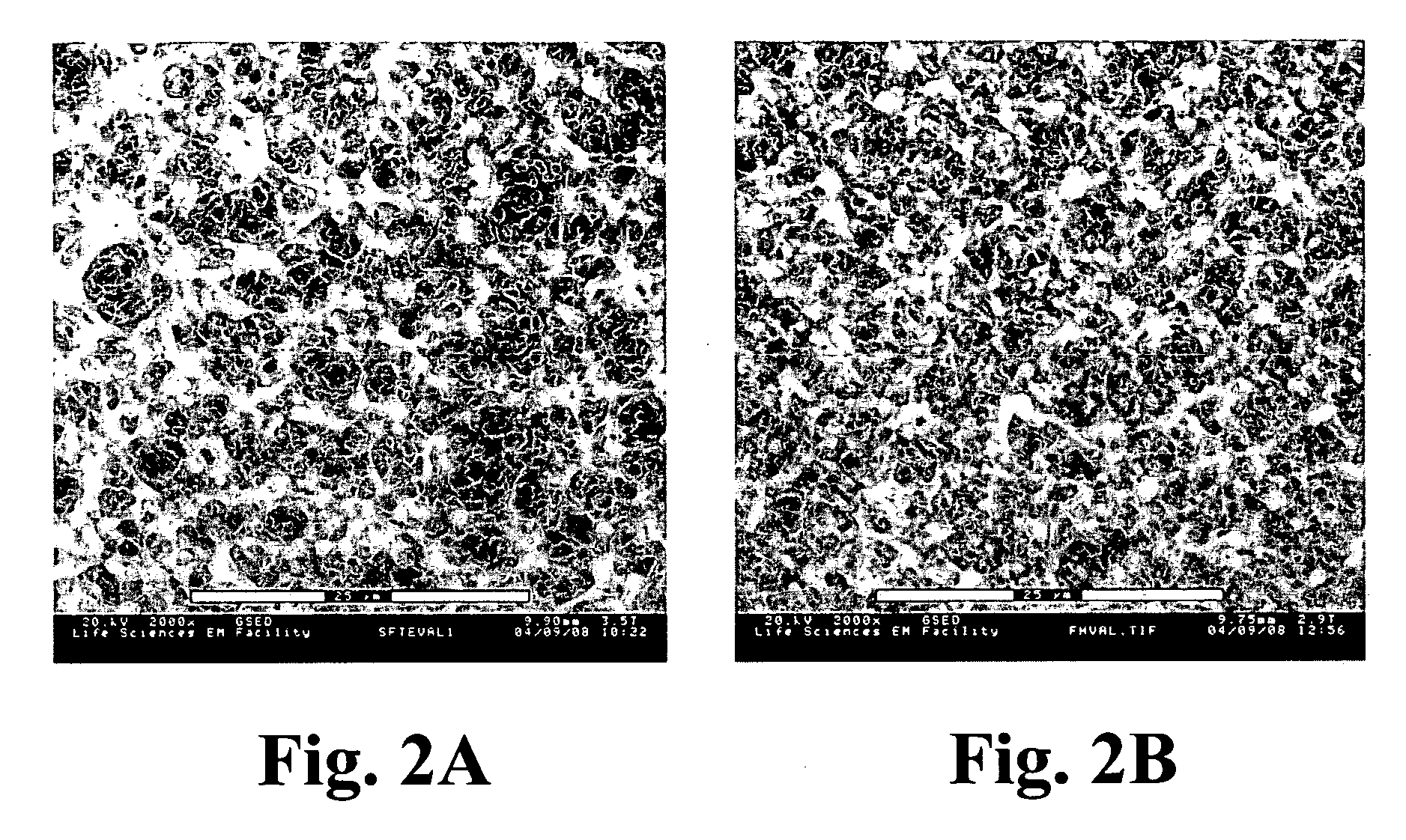Composite material comprising layered hydrophilic coatings
a technology of hydrophilic coatings and composite materials, which is applied in the direction of synthetic resin layered products, packaging, pipes, etc., can solve the problems of hydrophilicity and easy wetness with water
- Summary
- Abstract
- Description
- Claims
- Application Information
AI Technical Summary
Benefits of technology
Problems solved by technology
Method used
Image
Examples
example 1
[0146] This example describes the preparation of a negatively charged composite material according to the invention.
First Layer of Coating
[0147] A 2.5 wt-% solution was prepared by dissolving EVAL (32 mole % ethylene content) in N,N-dimethylacetamide at 70° C. overnight. The microporous poly(propylene) support member was placed on a polyethylene sheet. Thereafter the EVAL solution was spread evenly over it. The substrate was subsequently covered with another polyethylene sheet and the sandwich was run between two rubber rollers to press the polymer solution into the pores and remove excess of solution. The filled substrate was immersed to the water bath for 10 min to precipitate the polymer.
Second Layer of Coating
[0148] After washing with water, the surface water was removed with a tissue and the sample was placed in a bath containing 2.2 wt. % poly(4-styrenesulfonic acid) for 10 min to replace water by the polymer solution. Thereafter, the sample surface was slightly dried wi...
example 2
[0151] This example describes the preparation of a negatively charged composite material according to the invention.
First Layer of Coating
[0152] First layer of coating was introduced into the support member as described in Example 1.
Second Layer of Coating
[0153] After washing with water, the surface water was removed with a tissue and the sample was placed in a bath containing 1.5 wt. % poly(acrylic acid) for 10 min to replace water by the polymer solution. Thereafter, the sample surface was slightly dried with tissue, framed and placed in an oven at 60° C. for 20 min for the crosslinking process to occur. The sample was then washed with water for 30 min, again dried in an oven, weighed to estimate the mass gain and re-wetted for the water flux measurements.
[0154] The support member gained 19.3±0.1% of its original weight in this treatment. The composite material was instantly wettable (less than 30 sec) and showed water flux of 11,500 kg / m2 hr±100 at 100 kPa.
[0155] To quant...
example 3
[0156] This example describes the preparation of a neutral composite material according to the invention.
First Layer of Coating
[0157] First layer of coating was introduced into the support member as described in Example 1.
Second Layer of Coating
[0158] After washing with water, the surface water was removed with a tissue and the sample was placed in a bath containing 2.5 wt.-% poly(vinyl alcohol) for 10 min to replace water by the polymer solution. Thereafter, the sample surface was slightly dried with a tissue, framed and placed in an oven at 60° C. for 20 min. Then, the sample was washed with water for 20 min, slightly dried with a tissue and placed in an oven at 60° C. The sample was then weighed to estimate the mass gain and re-wetted for the water flux measurements.
[0159] The support member gained 20.1±0.2% of its original weight in this treatment. The composite material was instantly wettable (less than 30 sec) and showed water flux of 12,100±100 kg / m2 hr at 100 kPa.
PUM
| Property | Measurement | Unit |
|---|---|---|
| volume porosity | aaaaa | aaaaa |
| pore size | aaaaa | aaaaa |
| thickness | aaaaa | aaaaa |
Abstract
Description
Claims
Application Information
 Login to View More
Login to View More - R&D
- Intellectual Property
- Life Sciences
- Materials
- Tech Scout
- Unparalleled Data Quality
- Higher Quality Content
- 60% Fewer Hallucinations
Browse by: Latest US Patents, China's latest patents, Technical Efficacy Thesaurus, Application Domain, Technology Topic, Popular Technical Reports.
© 2025 PatSnap. All rights reserved.Legal|Privacy policy|Modern Slavery Act Transparency Statement|Sitemap|About US| Contact US: help@patsnap.com



